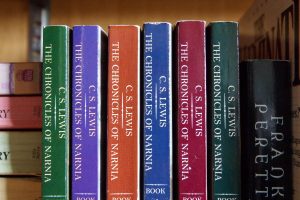Dogs in the Middle Ages: What Medieval Writing Tells Us About Our Ancestors’ Pets
In the bustling cities and rural villages of medieval Europe, dogs played a prominent role in society, serving diverse functions and captivating the hearts of their human companions. Their existence was deeply intertwined with human endeavors, from the thrill of the hunt to the comfort of domestic life. Through an exploration of medieval texts, this essay delves into the fascinating world of medieval dogs, shedding light on their functions, status, and the complex relationship they shared with humans.
The Hierarchy of Dogs
In the 16th century, English physician and scholar John Caius penned a treatise entitled De Canibus, wherein he meticulously classified dogs according to their societal functions. At the pinnacle of this hierarchy perched specialized hunting dogs, renowned for their remarkable speed and relentless pursuit of prey. Greyhounds, celebrated for their “incredible swiftnesse,” and bloodhounds, endowed with an extraordinary sense of smell, exemplified this elite category.
Descending the canine ladder, Caius encountered the “mungrells,” dogs of indeterminate lineage that occupied the lower rungs of society. Yet, even these humble creatures were defined by their occupations, whether as street performers entertaining the masses or turnspits, diligently running on wheels to rotate roasting meat in kitchens.
Dogs in Noble Homes
As hunting evolved from a necessity to an aristocratic pastime, the role of dogs in society underwent a significant transformation. They were increasingly welcomed inside noble homes, finding favor among women in particular. In these refined spaces, dogs became symbols of elite social status and prestige.
Caius’s ranking system reflected this changing dynamic, placing “delicate, neate, and pretty” indoor dogs below hunting dogs but above mongrels due to their association with the noble classes. The smaller these dogs were, the more they delighted their owners, evoking feelings of affection and admiration.
Even the church, despite its formal disapproval of pets, succumbed to the charm of dogs. Clerics, like noblewomen, often kept lapdogs as companions, finding solace and pleasure in their presence. These dogs were ideally suited to the indoor pursuits of their clerical owners, providing comfort and companionship in the cloistered confines of monasteries and abbeys.
Dogs in Urban and Rural Settings
Beyond the hallowed halls of noble homes and ecclesiastical establishments, dogs played a vital role in the daily lives of ordinary people. In urban areas, authorities grappled with the challenges of regulating guard dogs and curbing violent popular entertainments, such as boar, bear, and bull-baiting, which often involved dogs.
In the countryside, dogs were indispensable partners in hunting, herding, and guarding livestock. Their keen senses and unwavering loyalty made them invaluable assets to farmers and shepherds, ensuring the protection and well-being of their animals.
Dogs in Medieval Literature
Medieval literature abounds with tales and anecdotes that illuminate the diverse roles and perceptions of dogs in medieval society. The Bible, while often depicting dogs as unclean scavengers, also contains stories that highlight their unwavering loyalty and devotion.
The Golden Legend, a popular collection of saints’ lives, recounts the heartwarming tale of St. Roch’s faithful dog, who miraculously healed the saint’s wounds by licking them. This story, among others, underscores the medieval belief in the exceptional qualities that distinguished dogs from other animals.
The bestiary tradition, a genre of moralizing literature, further elaborates on the unique virtues of dogs. Stories of loyal dogs defending their masters, lamenting their deaths, and even identifying their master’s murderers abound in these texts, attesting to the deep bond between humans and their canine companions.
Dogs as Symbols of Fidelity
The association between dogs and loyalty extended beyond literature and found expression in medieval art. In tomb monuments, dogs were often depicted alongside their deceased owners, symbolizing the fidelity of wives to their husbands and the unwavering faith of clerics.
Archbishop William Courtenay’s alabaster effigy in Canterbury Cathedral exemplifies this tradition. The archbishop’s faithful dog lies obediently at his feet, a testament to his unwavering loyalty even in death.
Pampered Pooches and the Culture of Vivre Noblement
Medieval dog owners with ample means spared no expense in pampering their beloved companions. They adorned them with leashes, coats, and cushions made from the finest materials, reflecting the aristocratic culture of vivre noblement, where conspicuous consumption served as a public display of status.
This lavish lifestyle, however, was not without its critics. Some viewed the excessive pampering of dogs as a sign of idleness and vice, particularly among women. Hans Memling’s painting Allegory of Vanity captures this sentiment, depicting a woman surrounded by luxurious objects, including a small dog, symbolizing the perils of worldly desires.
Conclusion
Dogs occupied a diverse and multifaceted role in medieval society, serving as hunting companions, protectors, and cherished companions. They were symbols of status, loyalty, and unwavering devotion. Through an exploration of medieval texts and artistic representations, we gain a glimpse into the complex relationship between humans and dogs in the Middle Ages, revealing a shared history of companionship, affection, and mutual reliance.







